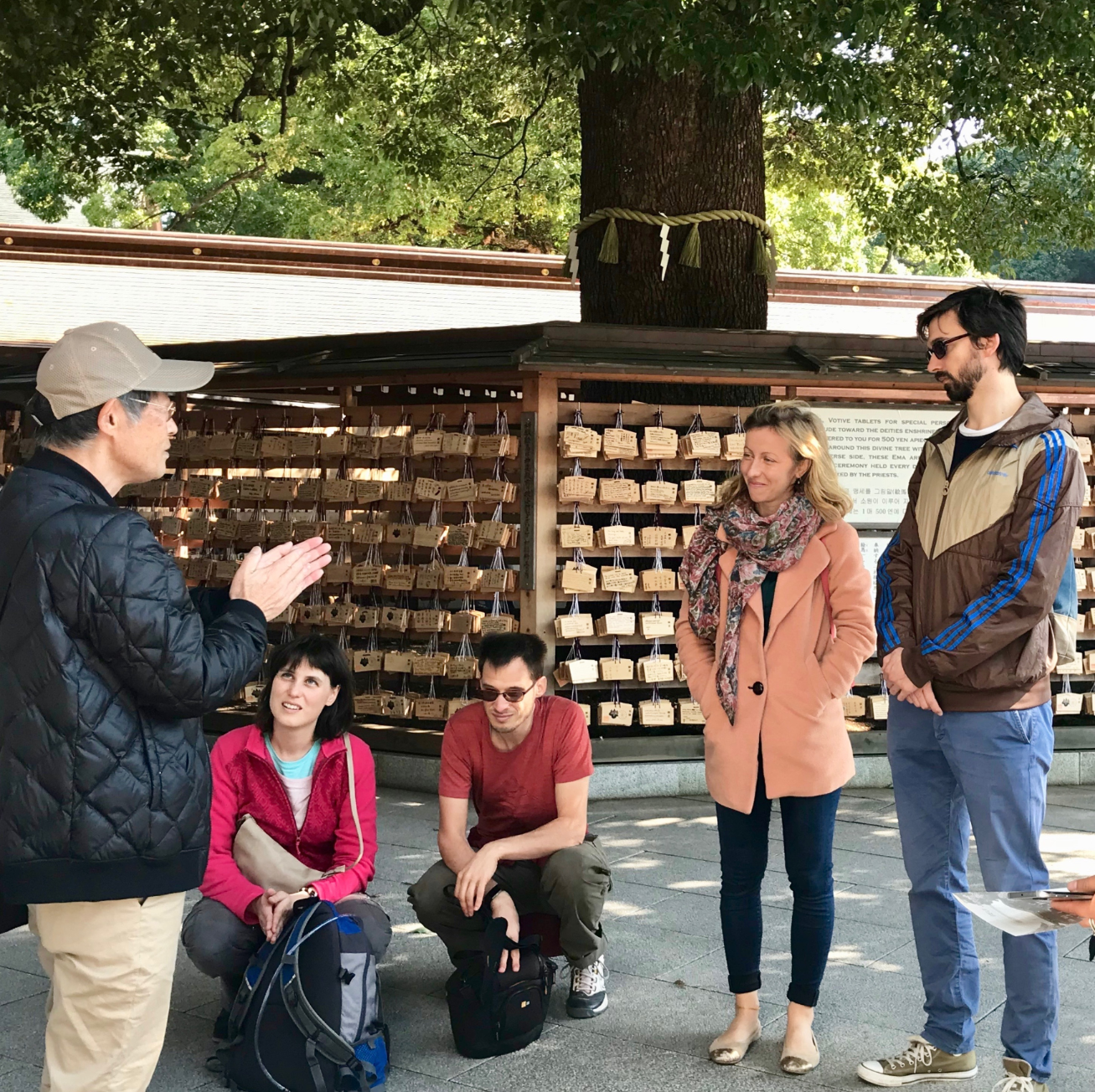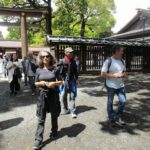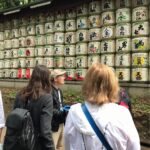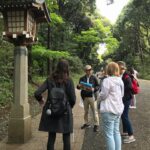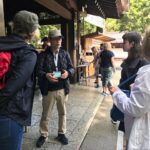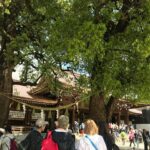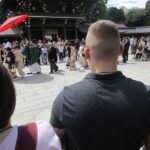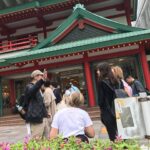On that day, April 15, we were honored to welcome 13 guests to our walking tour. These people came from different corners of the world, including U.S.A., Australia, Brazil, Singapore and Israel.



Springtime, has finally reached its peak, so most of the cherry blossoms have reached the height of their blossoming. Therefore, we can no longer see any blossoming in certain parts of Tokyo.
However, in a sacred place called the Meiji Jingu, a relaxing evergreen forest can fascinate and impress us instead.
Under this seasonal atmosphere, we were pleased to meet a lot of Harajuku enthusiasts.
Torii, or a shrine gate, was overlooking us, and it seemed to warmly welcome our tour group, as it always does.
We commenced our 90 minutes-strolling in front of the Torii.
———— Clapping One’s Hands————–
As everyone knows, clapping of hands are universal gestures normally seen in events, ceremonies and performances for people to express their appreciation, respect or gratitude. This movement is called “Hakusyu” in Japanese.
But in Japanese culture, clapping of hands can also have a different purpose. One example is typically done in shrines, with different approach and is also accompanied by rhythm.
One of the types of this hand gesture is conducted in Shinto rituals for people to express their respect to deities in hopes of having solace and comfort. This clapping of hands is called “Kashiwade“.
These are the steps on how to pray to the deities with “Kashiwade”.
First, you should approach in front of the Shinto building and make two bows.
Next, clap your hands twice, but slowly and gracefully.
Finally, bow once more. (See video)

Additionally, these hand strikes can also be seen in the end of a special event to bring the occasion to a peaceful, lively close.
It’s called “Tejime”, roughly translated as “closing by hand”. Tejime means the conclusion of important and successful events such as a celebration, a grand opening, or the closing of a deal or other business negotiations.
There are variations on how to do “Tejime” in line with the locally traditional rhythm.
The main types are: C ⇒⇒one clap space ⇒⇒a slight pause
@ Itchō-jime: This is a single clap.
C
@ Ippon-Jime: Repeat a set of three claps, and clap once.
CCC CCC CCC C

(They are making “Ippon-Jime clap” to conclude their tour.)
@ Sanbon-jime : Repeat a set of Ippon-Jime three times (See video)
CCC CCC CCC C
CCC CCC CCC C
CCC CCC CCC C

Teijime is normally done by a group and is led by a person with high stature, leadership or age.
These Japanese traditional gestures are different from normal clapping because they are done for special and important events.
———————————————————————————————————–
Apparently, April marks the 6th month of the Harajuku regular tour, since it started on September last year. Currently, we are welcoming a steady number of participants to our strolling tour. Why don’t you come and join us in our Harajuku tour, so we could discuss many informative topics like “What is Shinto and what is Buddhist?”
(By Arac)

